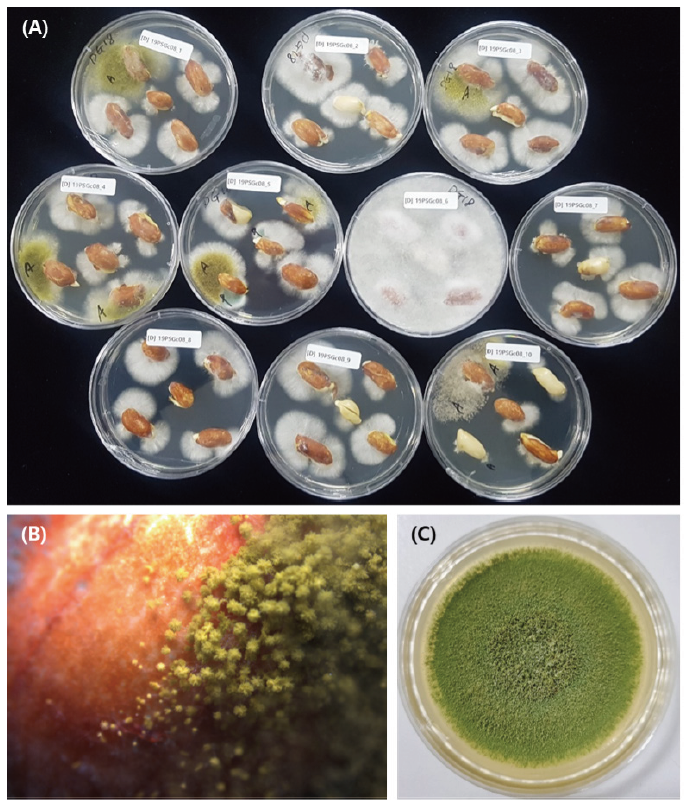Abstract
Peanuts in storage were estimated for mycotoxigenic fungi and mycotoxins. Peanut samples collected from storages in Gochang were mainly contaminated with Fusarium (17.2±28.0%), Penicillium (12.4±28.0%), and Aspergillus (8.0±7.6%). Other genera, including Talaromyces, Rhizopus, Rhizoctonia, Trichocladium, Clonostachys, Mucor, Chaetomium, Trametes, Epicoccum, and Humicola, were also found. Although aflatoxins were not detected in the peanut samples, 29 strains of Aspergillus flavus were identified using molecular marker genes. Among them, 17 selected isolates produced aflatoxins in solid culture media ranging from 0.61–187.82 μg/kg. All of them could produce both aflatoxin B1 and B2 and some (n=5) produced additional G1, G2, or both. This study is the first report that A. flavus stains obtained from Korean stored peanut are aflatoxigenic.
Figures & Tables

Fig. 1. Fungal colonies grown from peanuts on PDA (A), conidial heads of A. flavus (B) and PDA culture (C).


